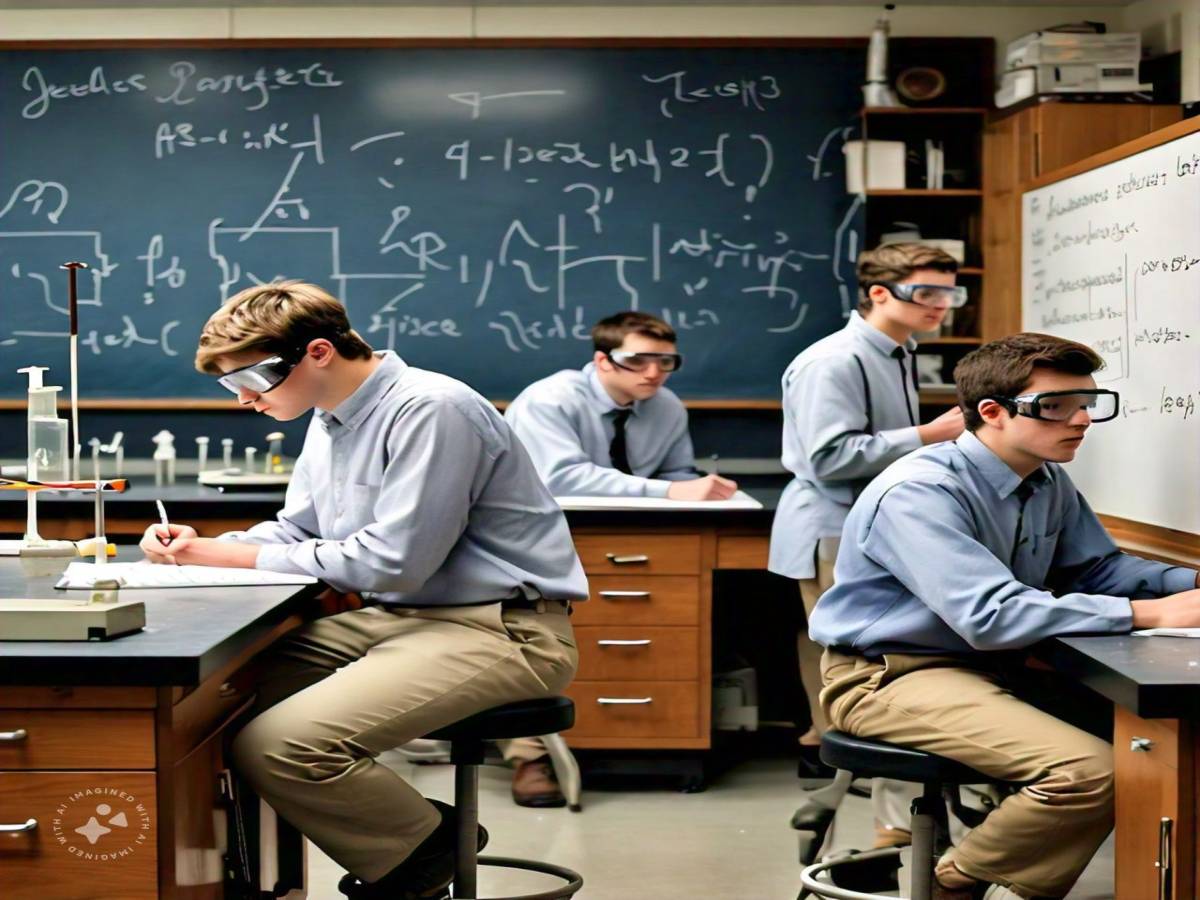Top 10 Degrees With The Highest Dropout Rates In The World

Choosing a degree program is a significant decision that affects a student’s career, finances, and personal development. While some students thrive and succeed, others find the journey challenging, leading to high dropout rates in certain fields of study. Several factors contribute to these dropout rates, such as academic difficulty, lack of interest, financial constraints, or a mismatch between the student's expectations and the reality of the course. In this blog, we will explore the top 10 degrees with the highest dropout rates in the world and the reasons behind these statistics.
According to times India, here is a numbered list of the courses mentioned:
List Of Degrees with the Highest Dropout Rates in the World
- Engineering
- Computer Science
- Medicine
- Architecture
- Mathematics
- Physics
- Economics
- Law
- Business Administration
- Psychology
1. Engineering
Engineering is often perceived as one of the most challenging fields of study due to its rigorous curriculum that includes advanced mathematics, physics, and technical skills. The dropout rate for engineering degrees is notably high, often exceeding 50% in some countries. Many students enter engineering programs without fully understanding the level of commitment required, leading to overwhelming stress and burnout.
The demanding coursework, coupled with long hours of study and lab work, is a significant factor. Additionally, students may find themselves struggling with specific subjects such as calculus, thermodynamics, or circuit analysis. When students realize that their passion or aptitude does not align with the technical nature of the degree, they often opt to drop out and pursue alternative career paths.
2. Computer Science

Computer Science is another degree with a high dropout rate, often ranging between 30% to 50%, depending on the institution and country. The complexity of programming languages, algorithms, data structures, and mathematical theories can be daunting for many students. The rapid pace at which the tech industry evolves means that students must constantly learn and adapt, which can be overwhelming.
READ ALSO » Top 10 Celebrities With Engineering Degrees From Top Universities
Moreover, some students enroll in computer science programs with a misconception about what the degree entails, believing it’s mainly about using computers rather than understanding the deep technical and theoretical aspects. When confronted with the reality of the program, many students decide to leave the course.
3. Medicine

Medicine is notoriously one of the most challenging and demanding fields of study, with a high dropout rate, especially in the first few years. The lengthy duration of medical programs, often spanning over a decade when including specialization, combined with the intense pressure and rigorous academic requirements, leads to a significant number of dropouts.
Many students underestimate the emotional, physical, and psychological toll that comes with studying medicine. The extensive workload, sleepless nights, and the pressure of dealing with life-and-death situations can lead to burnout, anxiety, and depression. Financial constraints also play a role, as medical degrees are among the most expensive to pursue.
4. Architecture

Architecture is a degree that demands creativity, technical skill, and an extensive understanding of mathematics, physics, and design principles. The dropout rate for architecture students is relatively high, often reaching 30% to 40%. The workload is incredibly demanding, with students spending long hours on design projects, model building, and presentations.
The combination of technical and artistic requirements makes architecture a challenging field for many students who may excel in one area but struggle in another. The program is also time-intensive, with many students facing burnout from the constant cycle of project submissions and critiques. Additionally, some students are deterred by the length of the program and the relatively slow career progression in the field.
5. Mathematics

Mathematics is another field with a high dropout rate, as it requires a deep understanding of abstract concepts, logical reasoning, and problem-solving skills. Many students find the theoretical and abstract nature of advanced mathematics daunting, especially when it moves beyond the arithmetic and basic calculus learned in high school.
Dropout rates in mathematics programs often exceed 30%. Students who initially enjoy mathematics may find the higher-level coursework in linear algebra, real analysis, or topology to be significantly more challenging than expected. Additionally, the solitary nature of the study, which often involves independent problem-solving and extensive time spent on complex proofs, can lead to feelings of isolation and frustration.
6. Physics

READ ALSO » The Top 10 People With The Highest IQ In The World
Physics is often regarded as one of the most intellectually challenging degrees, combining complex theoretical concepts with practical applications. The dropout rate for physics students is high, often ranging from 25% to 40%. The degree requires a strong foundation in mathematics, and many students struggle with advanced topics such as quantum mechanics, electromagnetism, and statistical mechanics.
The difficulty of the subject matter, coupled with the high volume of work required for laboratory assignments, problem sets, and exams, often overwhelms students. Additionally, the abstract nature of some areas of physics can be demotivating for those who prefer more tangible and practical applications.
7. Economics
Economics is a degree that requires a blend of mathematical, statistical, and theoretical knowledge, making it challenging for many students. The dropout rate for economics programs can exceed 30%, with students often finding difficulty in mastering advanced topics such as econometrics, microeconomic theory, and macroeconomic models.
Many students enter economics programs expecting to learn about practical financial markets and business principles but are surprised by the heavy emphasis on mathematical models, statistics, and theoretical frameworks. This mismatch between expectations and reality can lead to disillusionment and, eventually, dropout.
8. Law

Law is a demanding field that requires extensive reading, strong analytical skills, and a deep understanding of legal principles and case law. The dropout rate in law programs varies but is generally high, particularly in the early years. Students often find themselves overwhelmed by the sheer volume of reading, the complexity of legal jargon, and the pressure to perform in a competitive environment.
Many law students also struggle with the Socratic method of teaching, which requires them to think on their feet and engage deeply with complex legal concepts. Furthermore, the realization that a law career may not be as glamorous as portrayed in the media can lead to second thoughts and ultimately dropout.
9. Business Administration
Business Administration degrees, while popular, also have relatively high dropout rates, often reaching 30%. The reason for this is that many students enter these programs expecting an easy path to a lucrative career in business or management. However, they quickly realize that business administration involves rigorous coursework in accounting, finance, marketing, and operations management, all of which require strong analytical and quantitative skills.
The diverse range of subjects can also be overwhelming for students who may excel in one area, such as marketing, but struggle with finance or accounting. Additionally, some students may feel that the degree lacks practical application and opt for more specialized programs or real-world experience.
10. Psychology
READ ALSO » Jamb 2022 Top 10 Highest Scorers
Psychology is a popular degree choice, but it also has a high dropout rate, often exceeding 25%. Many students are attracted to psychology with the idea of understanding human behavior and helping people but find the program's scientific and research-focused approach challenging.
Courses in psychology often require a strong understanding of statistics, research methodologies, and neuroscience, which can be daunting for those expecting a more humanities-based program. The realization that advanced degrees are often necessary for meaningful careers in psychology, such as clinical psychology, can also discourage students from continuing.
Conclusion
High dropout rates in these degrees reflect the challenges students face in meeting academic demands, managing expectations, and coping with stress. Choosing the right degree requires careful consideration of one’s strengths, interests, and career aspirations. Universities and educational institutions can help reduce dropout rates by providing better guidance, support systems, and resources to help students make informed choices and succeed in their chosen fields. For students, understanding the realities of a degree program before committing can make a significant difference in completing their education successfully.
